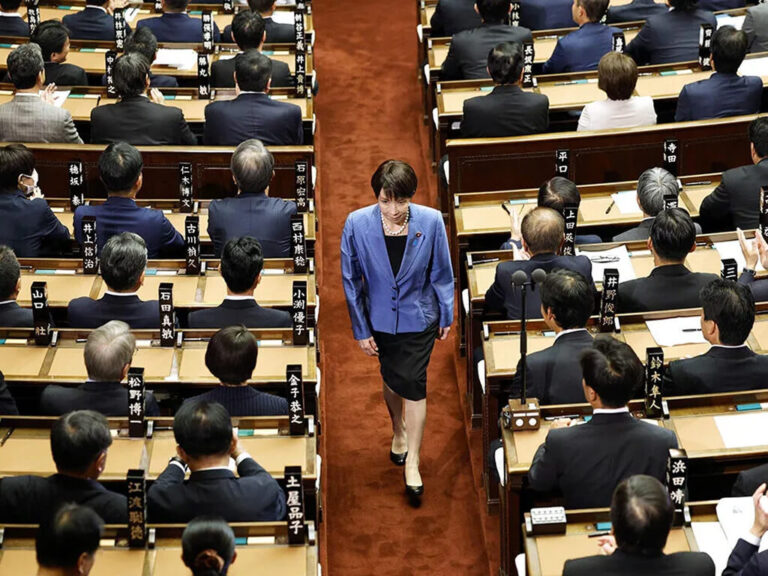Central Asia now resembles a woman whom everyone desires to engage with. As the curtains imposed by the Soviet Union and Russia are loosening, Central Asia is starting to expose itself to the world. More and more countries are making diplomatic efforts with Central Asian countries to secure valuable mineral resources, including lithium, which is considered the “Vibranium” of the electric vehicle era, to benefit their economies.
While Russia dominated Central Asia for three decades after the region broke away from the Soviet Union, they did not put much effort into utilizing the mineral resources that could have brought wealth to these countries. Instead, Russia bound them with political influence, which damaged their relationships with the West and hindered investments that could have funded projects. As a result, these countries remained poor despite having valuable mineral resources.
The entry of China, which has a voracious appetite for minerals as raw materials for its vast manufacturing hubs, marked a significant shift. By leveraging its friendship with Russia, China started to explore the potential of Central Asia. Their investment through the Belt and Road Initiative became a wake-up call for Central Asian countries to welcome parties other than Russia, leading to more opportunities.
Following Russia’s war in Ukraine and its subsequent weakening, Central Asian countries are now eagerly looking to collaborate with multiple parties. The United States has launched efforts to facilitate integration with these countries, aiming to reduce Russia’s influence. Turkey, which already maintains emotional ties to Central Asia, and India, aspiring to become a superpower, are also setting up measures to explore opportunities in the region. Additionally, South Korea, a small resource-poor country with a large production sector highly reliant on mineral imports, is the latest entrant seeking opportunities in Central Asia.
South Korean President Yoon Suk Yeol is currently on a trip to Central Asia, starting Monday, to hold talks on strengthening diplomatic ties and cooperating in areas such as energy and minerals. Yoon already visited Turkmenistan, a country largely isolated from the outside world but rich in important minerals, with the first lady for a state visit before heading to Kazakhstan and Uzbekistan. In Kazakhstan, Yoon discussed with President Kassym-Jomart Tokayev measures to expand supply chain cooperation for critical minerals such as lithium and uranium, which are in high demand for the technology industry in South Korea. Yoon’s office announced the signing of 35 memorandums of understanding (MOUs) in areas such as supply chain cooperation and lithium exploration and commercialization. The trip started in the Turkmen capital of Ashgabat and will conclude in Uzbekistan.
While for Central Asia, Korea is another important partner to invest in and improve infrastructure, Yoon’s trip to Central Asia represents Seoul’s latest global effort to expand diplomatic ties and partnerships, aiming to secure access to markets, energy supplies, and other resources. Yoon’s office announced plans to host a summit with leaders of five Central Asian countries next year in South Korea. It’s interesting that the United States, Seoul’s key ally, has assured a similar plan in Central Asia, aiming to create a bloc that can counter political and economic dependence on Russia. While the United States has made deals with Central Asia, the benefits will also naturally extend to Japan, Taiwan, and South Korea, as they are key allies of the United States in Asia. However, South Korea has taken an additional step in its relationship; it represents the country, booming with electronics, batteries, and semiconductors, placing high value on its relationship with Central Asian countries.
Many believe South Korea is counteracting China’s influence in the region. Like China, South Korea is warming diplomatic relationships and leading summits with countries that can contribute to its economy and where it can introduce its soft power. Before leaving for Central Asia, Yoon declared a policy vision, the “K-Silk Road,” which he said would combine South Korea’s technical expertise with Central Asia’s resource wealth. And it must be considered as the continuation of South Korea’s hosting of its first summit with the leaders of 48 African nations this month, during which it vowed to increase development aid for Africa to $10 billion over the next six years as it looks to tap the continent’s mineral resources and potential as an export market.
South Korea’s entry is definitely a hopeful sign for Central Asia. The region, rich in resources but lacking the necessary investments and infrastructure, can benefit significantly from South Korea’s involvement and reduce its reliance on Chinese money, which has already created dependency. In return, resource-poor South Korea can gain an advantage in the global race for technology domination. However, South Korea has taken an additional step in its relationship; it represents the country, booming with electronics, batteries, and semiconductors, placing high value on its relationship with Central Asian countries.
In recent years, South Korea has experienced shortages of key materials, including graphite and urea solution, when China decided to restrict exports. In both cases, authorities scrambled to find alternative sources to limit disruptions to businesses. Thus, it has become crucial for Korea to seek new sources, then why not untapped Central Asia?








